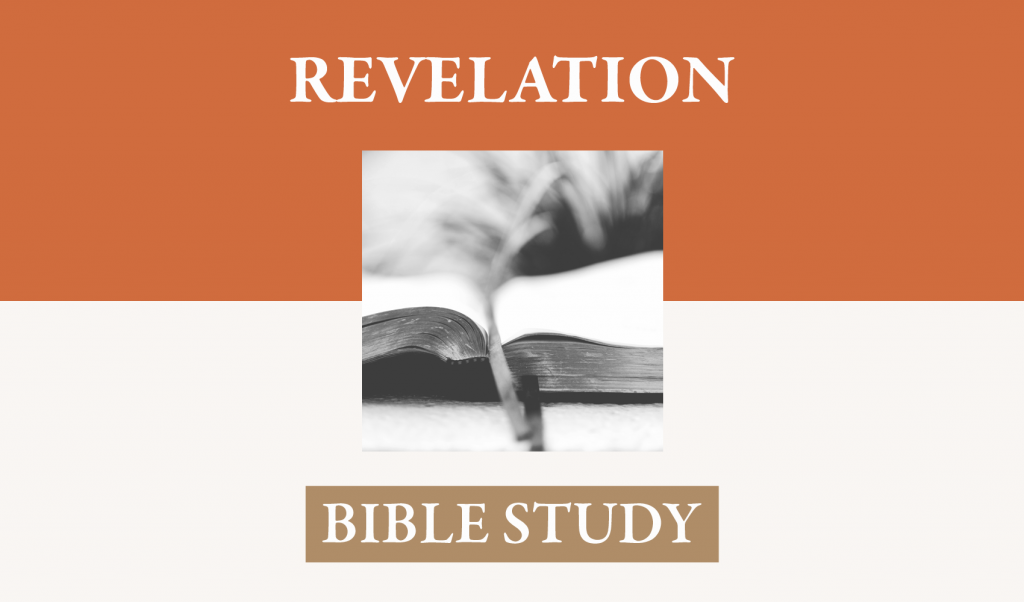Week of April 5, 2020
The Point: We can live forever in the presence of God.
The New Heaven and the New Earth: Revelation 21:1-8.
[21:1] Then I saw a new heaven and a new earth, for the first heaven and the first earth had passed away, and the sea was no more. [2] And I saw the holy city, new Jerusalem, coming down out of heaven from God, prepared as a bride adorned for her husband. [3] And I heard a loud voice from the throne saying, “Behold, the dwelling place of God is with man. He will dwell with them, and they will be his people, and God himself will be with them as their God. [4] He will wipe away every tear from their eyes, and death shall be no more, neither shall there be mourning, nor crying, nor pain anymore, for the former things have passed away.” [5] And he who was seated on the throne said, “Behold, I am making all things new.” Also he said, “Write this down, for these words are trustworthy and true.” [6] And he said to me, “It is done! I am the Alpha and the Omega, the beginning and the end. To the thirsty I will give from the spring of the water of life without payment. [7] The one who conquers will have this heritage, and I will be his God and he will be my son. [8] But as for the cowardly, the faithless, the detestable, as for murderers, the sexually immoral, sorcerers, idolaters, and all liars, their portion will be in the lake that burns with fire and sulfur, which is the second death.” [ESV]
“A New Heaven and a New Earth [21:1-4]. The opening statement of 21:1 provides some of the greatest encouragement that Christians could ever receive. The Bible states that when Christ returns, the heaven and earth, which is a way of referring to both the physical universe and the spiritual world order, will be cleansed and renewed in glory. We are reminded by this that the Bible places the final destiny of God’s people not in an ephemeral, wispy heaven but on a redeemed earth, where God’s creation beginning comes to a glorious eternal end. We see here the work of cleansing and renewal of the cosmos that will take place after Christ returns.
No More Sea. Revelation 21:1 adds a provocative statement that sums up the removal of all evil: and the sea was no more. In the symbolism of Revelation, the sea has a theological rather than topographical meaning. The sea is the realm of evil and rebellion against God. In Revelation 12:17, Satan stood on the sand of the sea, and then raised up his beast out of the sea [13:1]. In chapters 17-20, John was shown the removal of the dragon, his beasts, and the harlot, together with their entire wicked program. Finally, even the sea from which they came will be no more. Christians are to anticipate now the renewed creation, where there will be no evil, no transgression, and not even the temptation to sin.
No More Corruption. The second feature of the new creation ushered in by Christ’s return is a vision of the church as we will then be: And I saw the holy city, new Jerusalem, coming down out of heaven from God [21:2]. Isaiah has foreseen a redeemed Jerusalem that is made righteous by God’s coming and that receives a new name reflecting a marriage relationship of love with God [Isa. 62:2-5]. John sees this promise fulfilled not in Jesus’ first appearing but in the second coming of Christ. Jerusalem was the earthly center of God’s redeeming acts in history, especially in the atoning death of His Son. Therefore, just as creation is glorified in the new heaven and new earth, redemption comes to glorious consummation in the coming of the new Jerusalem. The first characteristic of God’s city is its holiness: the holy city. When believers come to faith in Christ, they are spiritually renewed for the sake of this destination. Second, God’s people are a community. A city defined not primarily by streets and buildings, but by its people. Eternity therefore consists not of a solitary pursuit of the beatific vision but of a corporate experience of God’s glory. Hebrews 12:23 identified the heavenly Jerusalem as the assembly of the firstborn … the spirits of the righteous made perfect. This city now comes down to earth in renewed and glorified form. Third, God’s city is marked by His sovereign grace. When John says that the new Jerusalem is coming down out of heaven from God [21:2], he means that God’s activity results in His people’s attaining to this place in eternal glory. The church was chosen, justified, adopted, and sanctified, and will finally be glorified by God’s sovereign grace. For this reason, believers in Jesus can be certain of this glorious destiny. The glory of the new Jerusalem belongs exclusively to God, reflecting on His people who are eternal mirrors of His grace. Fourth, the new Jerusalem is marked by loving intimacy, since she is prepared as a bride adorned for her husband [21:2]. This love is enjoyed by Christians together with our Lord, the triumphant Jesus Christ. The experience of heaven is the bliss of being utterly and eternally loved. In the new Jerusalem, we see God’s renewed people no longer condemned by sin. Believers are qualified to enter eternal loving intimacy with God’s Son because we are cleansed of our sin by His blood and justified in the garment of His imputed righteousness. This is why John says that the church is prepared as a bride adorned for her husband [21:2]. By the atoning sacrifice in His blood, Jesus has forever removed our sin, gaining forgiveness before God for all who believe. Here, too, Christians are reminded of their destiny as an incentive to loving zeal for Jesus now.
No More Death or Tears. Our present fallen world suffers the tyranny of Christ’s enemies, so that we now live in a spiritual wasteland of corruption and temptation. To make matters worse, we have the calamity of our own sinful nature. A third evil of our present age is seen in the consequences of sin in terms of the ravages of grief and sorrow. Revelation 21:1-2 saw the sea and all evil removed from our future environment and God’s people cleansed and adorned for glory. Now the life of the age to come is made new, with no more misery under the cursed reign of sin and death [21:4].
Dwelling Forever with God. So far, Revelation’s picture of the new creation has been primarily by way of negation: there will be no sea, no stain of sin, and no more weeping or sorrow. At the heart of the passage, however, is the great positive blessing awaiting Christ’s people [21:3]. This verse has been described as the climax of that entire process whereby God comes to His people. In the age to come, the longing of every spirit to know God and see His face will be perfectly fulfilled. The communion that God has eternally purposed to enjoy with His people will be achieved. Without this vision of the new heaven and the new earth, we will live without the hope Christ offers, without the purpose He supplies, and without the glory He promises.
All Things New [21:5-8]. The God of Truth. In Revelation 21:5-8, the apostle John’s long tour of church history brings him finally to the end of the world. And here, at the end, John and his readers face God Himself. On only two occasions in the book of Revelation does God Himself speak directly. The first occasion was at the beginning: ‘I am the Alpha and the Omega’, says the Lord God, ‘who is and who was and who is to come, the Almighty’ [1:8]. Now, at the end of history, we face God Himself once more. In this way, Revelation makes a vital point: every living soul must deal with God. All through life we may follow the distractions that keep us from reckoning with God, but in the end we must all face Him. Because we must all face God, we have no greater need than to know Him. Revelation 21:5-8 shows God as He is and as He will be at the end of the world: a God of truth, a God of life, and a God of justice. We see Him taking delight in His victory over all things, declaring His final purpose: Behold, I am making all things new [21:5]. Here God Himself bears witness to the truth of His Word: Write this down, for these words are trustworthy and true. God reveals the truth of His Word by His Word as the Spirit applies it to our hearts. Not only does God declare the truth of His Word by His own direct assertion, but He declares that the events foretold in Revelation are already fully established: And he said to me, ‘It is done!’ [21:6]. God is standing at the end of history, speaking to John in the midst of history to declare a future that is already certain. Christ’s death achieved the ground of salvation, the judgment of sin provided the context for salvation, and now God declares the arrival of salvation, having stated, Behold, I am making all things new [21:5]. In addition to declaring the truth of His Word and the accomplished reality of His promises, God declares to John, I am the Alpha and the Omega, the beginning and the end [21:6]. Alpha is the first letter of the Greek alphabet, and omega is the last. By calling Himself the Alpha and the Omega, God speaks of His eternal being: He is the Creator who brought all things into existence, and He is the Judge who brings all things to their final end. The point is God’s sovereignty over all things: He can ensure the end because He was Lord at the beginning and remains sovereign through every moment of history. As the Alpha and the Omega of history, God rules absolutely over all things in between. God’s sovereignty provides another reason to be certain of the truth of His Word. Knowing the truth of God’s Word is essential, since we are trusting it to reveal the way of salvation and eternal life. Knowing God’s trustworthy and eternal nature and His sovereign control over all things, Christians who are called to suffer for their faith are comforted with the certain knowledge that they will not have believed in vain.
The God of Life. The God who stands at the end of the world is not only the speaker of truth but also the giver of life. He declares: Behold, I am making all things new [21:5]. God alone can truly renew because of the Spirit that He sends. He is doing this work now in the hearts of those who believe in Jesus. What God is doing now on a limited scale in His people He will extend to all things at the end. Those who are justified in Christ so as to stand before God in the end will have the glorious experience of witnessing the renewal of the entire creation. God says, To the thirsty I will give [21:6]. This is the sole requirement to receive His gift of life: to thirst for God and the spiritual life that He has to give. The new world that God brings in the end will provide the fulfillment of our deepest longings, but at the same time our experience of God’s glory will create still deeper longings so that our thirst is being eternally satisfied more and more. Another aspect of life concerns the relationship that the faithful will fully enter into at the end [21:7]. The citizens of God’s eternal city enjoy the privilege of knowing the true and living God as their own Father. If it is the thirsty who are invited to drink from God’s living spring, it is the one who conquers who attains the heritage of eternal sonship with God. Together, these two descriptions capture the beginning and the end of the Christian life. We first receive salvation by bringing our thirst to God in simple faith. But Christians then walk in that faith so as to persevere to the end. Believers overcome in the grace of Christ and not in their own strength, and for God’s glory alone. Revelation 12:11 teaches that Christians conquer by the blood of the Lamb and by the word of their testimony. This victory takes place in an active life of striving as we trust God and follow Christ.
The God of Justice. At the end of the world, God sits enthroned in truth and in the life that He gives. Those who have thirsted for salvation so as to drink from His grace and who have conquered in faith so as to be granted the status of sons will meet God there for an eternal experience of glory. Yet God was speaking to John while the apostle was still living on this earth. This means that a warning must accompany these soaring statements of grace. The God of truth and love must also be revealed as a God of justice who punishes all unforgiven sins [21:8]. Those who thirst for sin and for the pleasures of the world, together with those who collaborate in the world’s rebellion against God, will receive not the heritage of glory but the portion of condemnation reserved for all of God’s spiritual enemies in hell. The list given to John seems to have two groups, the first of which likely refers to those who had professed faith in Christ but abandoned their confession under worldly pressure or sinful enticement: But as for the cowardly, the faithless, the detestable. The cowardly and faithless are not Christians who struggle with fear, but people who betray Christ under pressure. The remainder of the list involves sinners whose lives characterize the ungodliness of the world: murderers, the sexually immoral, sorcerers, idolaters, and all liars. These are the kinds of sins that Jesus rebuked in the seven letters of Revelation, calling believers to purge them from their lives and fellowship. Jesus especially demanded a rejection of sexual immorality and idolatry [2:14,20], although worldly violence, occult practices, and falsehood are also to have no place in the lives of those who are joined to Christ through faith. This is not to say that Christians are people who have never committed such sins or that believers’ lives are completely free from any such sins now. God is not telling John that anyone who has ever committed sexual immorality or who has lied is barred from eternal life. Christ came to redeem these very kinds of sinners [Mark 10:45; 1 Tim. 1:15], and the blood of Jesus, God’s Son, cleanses believers from all their sins [1 John 1:7]. The point is that those who are saved from such sins are called to renounce them in such a way that they cannot remain characteristic of a Christian’s lifestyle. At the end of the world, God sits enthroned. Every human being will face Him, and God’s sovereign rule will be the arbiter of every person’s eternal destiny. If God is the One who matters most in the end, then God also matters most now. For this reason, every person is called by God’s Word to be reconciled to God through the forgiveness offered by Jesus [2 Cor. 5:20].” [Phillips, pp. 608-628].
The River of Life: Revelation 22:1-5.
[22:1] Then the angel showed me the river of the water of life, bright as crystal, flowing from the throne of God and of the Lamb [2] through the middle of the street of the city; also, on either side of the river, the tree of life with its twelve kinds of fruit, yielding its fruit each month. The leaves of the tree were for the healing of the nations. [3] No longer will there be anything accursed, but the throne of God and of the Lamb will be in it, and his servants will worship him. [4] They will see his face, and his name will be on their foreheads. [5] And night will be no more. They will need no light of lamp or sun, for the Lord God will be their light, and they will reign forever and ever. [ESV]
“The River of the Water of Life [22:1-5]. These verses provides the last images in the final vision of salvation in the entirety of Scripture. Here, we find images that we recognize from the garden of Eden, including the river of the water of life and the tree of life. As the redeemed people of God are restored to these blessings, we find that God’s original purpose in creation has not been thwarted a single iota by the rebellion of Satan and the scourges of sin. In the temple-city of Revelation’s final vision, God’s people do not go back to the garden but forward to what God intended when the first Paradise was born at the dawn of time. At the end, as in the beginning, the triune God reigns triumphantly in a paradise inhabited by his faithful, adoring, image-bearing people.
Life Flowing from God’s Throne. Previously, John has looked on the eternal city and on the people living there. Now he concludes with the sources of life that bless the garden-city, the new Jerusalem [1]. There are many biblical antecedents to this vision, but two stand out. The first was the river that flowed out of Eden to water the garden [Gen. 2:10]. The second was the river that was issuing from below the threshold of the temple in Ezekiel’s vision of God’s end-times temple [Ezek. 47:1]. Whereas the first river flowed out of Eden and Ezekiel’s river issued from the eastern temple door, the river of the new Jerusalem flows from the throne of God and of the Lamb. The clear point is that the sovereign reign of God in history is the source of the life and refreshment that flows to his people in eternity. Since it is the throne not only of God but also of the Lamb, we see that grace flows from the sovereign will of the Father by means of the saving death of his Son. Moreover, the salvation depicted by this bright crystal river consists of fellowship in the life that comes from God. Here in Revelation, John provides details regarding this river of life. He says that its water is bright as crystal, depicting the purity of life that God gives and the cleansing effect of the grace that we receive by faith. John adds that the river flows through the middle of the street of the city [2]. Earlier, we saw a street of pure gold, transparent as glass [21:21]. Apparently the river flows either atop or beside the main thoroughfare, showing that divine life streams in the heart of the eternal dwelling place of God’s people. Here is fulfilled the promise of Revelation 7:17: The Lamb in the midst of the throne will be their shepherd, and he will guide them to springs of living water. Ezekiel’s temple vision showed the stream beginning at the temple doors as a trickle, then growing ankle-deep, then rising waist-deep, and finally getting so deep that it could not be crossed [Ezek. 47:1-12]. This depicted the increasing power of God’s grace as it advanced in redemptive history. The Genesis account of the garden highlighted not only the river flowing out of Eden, but also the tree of life … in the midst of the garden [2:9], which conveyed eternal life to those who eat from it [3:22]. Now John sees this Tree of Life growing on both sides of the river. The fact that twelve kinds of fruit are yielded each month indicates both the variety of blessings and their perpetual availability. There is an abundant provision of spiritual life and grace to meet every imaginable need. Only through the death of Christ for healing and forgiveness does mankind find its cherished utopia.
Blessing in the Light of God’s Throne. Revelation 22:1-2 shows the ultimate accomplishment of salvation by the sovereign will of the Father and the atoning death of the Son, culminating in the outflowing provision of eternal life. The final three verses [3-5] depict the eternal application of redemption for those who come to Christ in faith. For them, the curse of sin will give way to the blessing of grace, eternity will be spent basking in the knowledge and service of God, and those joined to Christ will reign with him forever and ever. When John says, “No longer will there be anything accursed [3], he declares that the entry of sin has been remedied and reversed. Now believers will enjoy the bounty of God’s grace, which is richer in Christ than the joys of the original garden. The chief bane of Adam and Eve’s fall into sin was their alienation from the presence of God. The chief blessing of the eternal glory is, correspondingly, the return of God’s presence to his redeemed people. John thus writes that the throne of God and of the Lamb will be in it [3]. God’s throne dominates the visions of Revelation. The calling for God’s throne to reign in your life through obedience to his Word is a sign of your return to his favor. Just as the curse of sin was removed by God’s sovereign will and the Lamb’s atoning work, his blessing is sustained by the enthroned presence of God in his truth and grace. Note further that the people redeemed from the curse and blessed by God’s presence are his servants who will worship him [3]. In the new Jerusalem, we will share with Christ in the care and cultivation of the glorified cosmos, fulfilling our God-given desire to work for things of true value and glory. Undoubtedly, we will be filled with rapture in bowing before the living God and singing with angel choirs songs of grace and glory. Not only will we enter into the blessing of God, but we will spend eternity growing in our knowledge of him. John writes: They will see his face [4]. To see God’s face will be to know who God is in his personal being. This will be the heart of humanity’s eternal joy in their eternal worship of God. In addition to seeing God’s face, believers will have his name written on their foreheads [4]. The mark of God signifies the loyalty of those who belong to him. Moreover, the name of God stands for his character, which is reflected in the holiness of the glorified saints. God’s mark indicates his ownership, his covenant union, and his acceptance of all who bear his name in eternity. None who bear his name will ever be forgotten or lost. John repeats in verse 5 his earlier statement that night will be no more. They will need no light of lamp or sun, for the Lord God will be their light” Everything belonging to the old order will have gone, including both nighttime with its dangers and temptations and the celestial light needed for daytime. In the new Jerusalem, God’s presence will always be our light. The very last statement of the final vision of salvation provided in Revelation must be significant. John concludes: And they will reign forever and ever [5]. Thus, at the end is fulfilled God’s first calling for his people. God said, Let us make man in our image, after our likeness. And let them have dominion [Gen. 1:26]. Sin made us slaves, but God intends by grace to make us kings. Through union with Christ in faith, you are destined to reign with him in the land of glory. [Phillips, pp. 663-673].
Questions for Discussion:
- Revelation is filled with Old Testament symbolism. Describe what John sees in 21:1-8. What does the symbolism found in 21:1-4 tell us about a new heaven and a new earth; the sea; the holy city? What changes will God make when he makes all things new?
- What does the new Jerusalem represent? What are four characteristics of the new Jerusalem?
- How does 21:5-8 describe God? What does God do? What does he say? What promises does God give? How is God truth, life and justice in these verses?
- What does 22:1-5 tell us about the city of God? What is the meaning of the symbols: river of life, tree of life, twelve kinds of fruit, throne of God, see his face, his name on foreheads, God as light?
References:
Revelation: A Shorter Commentary, G. K. Beale, Eerdmans.
Revelation, Joel Beeke, Reformation Heritage Books (ebook).
Revelation, Simon Kistemaker, Baker.
Revelation, Richard Phillips, REC, P & R Publishing.





















